
Else Mikkelsen
@elsemikkelsen.bsky.social
PhD candidate at the University of Toronto studying the genomics of speciation. Currently studying skuas, manakins, and rates of sequence evolution.
Almost PhDone! I'll be giving my PhD exit seminar in the morning (Thursday), and defending on Friday.

November 6, 2025 at 5:25 AM
Almost PhDone! I'll be giving my PhD exit seminar in the morning (Thursday), and defending on Friday.
Reposted by Else Mikkelsen
Something cool to start your weekend: a Blue Jay x Green Jay hybrid from Texas! #ornithology

Rare blue-and-green hybrid jay spotted in Texas is offspring of birds whose lineages split 7 million years ago
The hybrid bird is the product of two species whose habitat ranges began to overlap a few decades ago, potentially due to climate change, researchers said.
www.livescience.com
September 26, 2025 at 6:03 PM
Something cool to start your weekend: a Blue Jay x Green Jay hybrid from Texas! #ornithology
Reposted by Else Mikkelsen
It's family values day here at Team Hākoakoa. You'll struggle to find a bird more devoted to its chicks than Skua. Just look at that fuzzy brown face. How could you not vote Skua for #birdoftheyear2025? #Skua @forestandbird.bsky.social

September 14, 2025 at 8:14 PM
It's family values day here at Team Hākoakoa. You'll struggle to find a bird more devoted to its chicks than Skua. Just look at that fuzzy brown face. How could you not vote Skua for #birdoftheyear2025? #Skua @forestandbird.bsky.social
Reposted by Else Mikkelsen
Hybridization and introgression are major evolutionary processes. Since the 1940s, the prevailing view has been that they shape plants far more than animals. In our new study (www.science.org/doi/10.1126/...
), we find the opposite: animals exchange genes more, and for longer, than plants
), we find the opposite: animals exchange genes more, and for longer, than plants

September 12, 2025 at 7:55 AM
Hybridization and introgression are major evolutionary processes. Since the 1940s, the prevailing view has been that they shape plants far more than animals. In our new study (www.science.org/doi/10.1126/...
), we find the opposite: animals exchange genes more, and for longer, than plants
), we find the opposite: animals exchange genes more, and for longer, than plants
Reposted by Else Mikkelsen
super excited to share this big project with @daeaton.bsky.social out now in Systematic Biology! We derived distributions for -- given an arbitrary species tree model -- how far you have to move along a genome before observing a change in the underlying genealogy: doi.org/10.1093/sysb...

Estimating waiting distances between genealogy changes under a Multi-Species Extension of the Sequentially Markov Coalescent
Abstract. Genomes are composed of a mosaic of segments inherited from different ancestors, each separated by past recombination events. Consequently, genea
doi.org
September 11, 2025 at 7:36 PM
super excited to share this big project with @daeaton.bsky.social out now in Systematic Biology! We derived distributions for -- given an arbitrary species tree model -- how far you have to move along a genome before observing a change in the underlying genealogy: doi.org/10.1093/sysb...
Reposted by Else Mikkelsen
Why do treehoppers look so weird?! Our latest paper, out this week in @pnas.org, suggests a perhaps unexpected reason - static electricity ⚡ We show that treehoppers can detect the electrostatic cues of predators and that their crazy shapes may boost their electrosensitivity! doi.org/10.1073/pnas...
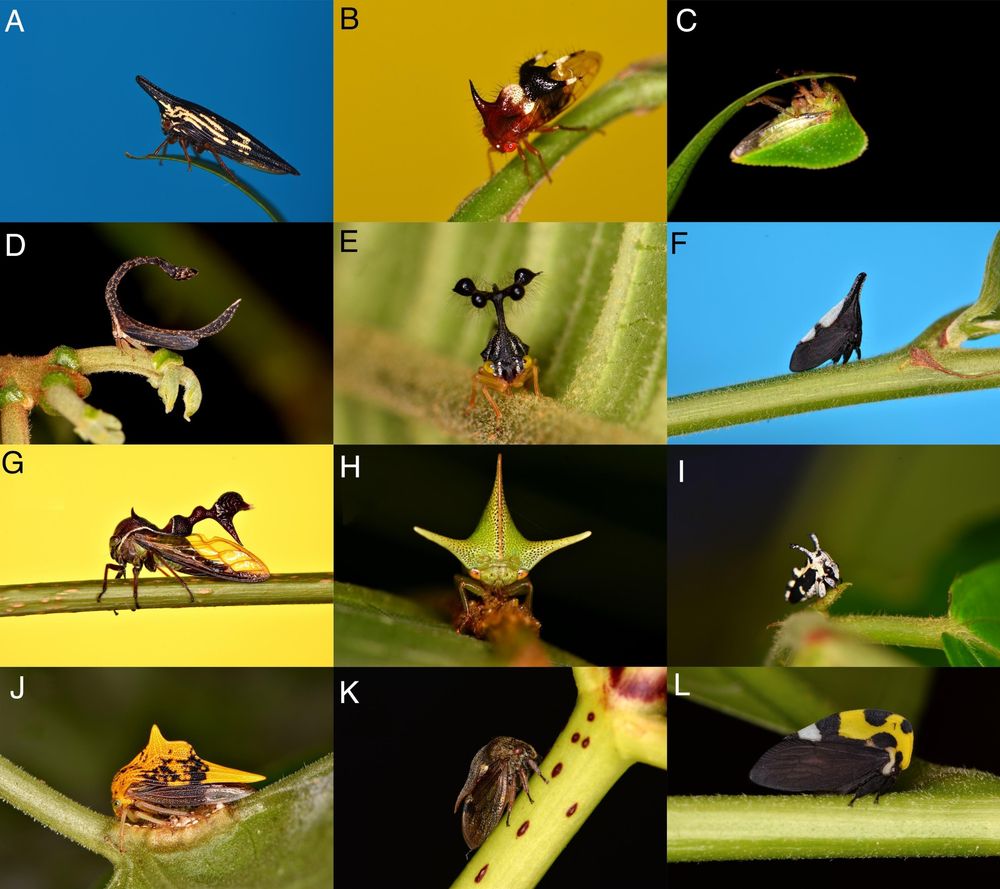
Electroreception in treehoppers: How extreme morphologies can increase electrical sensitivity | PNAS
The link between form and function of an organism’s morphology is usually apparent
or intuitive. However, some clades of organisms show remarkable ...
doi.org
July 24, 2025 at 11:44 AM
Why do treehoppers look so weird?! Our latest paper, out this week in @pnas.org, suggests a perhaps unexpected reason - static electricity ⚡ We show that treehoppers can detect the electrostatic cues of predators and that their crazy shapes may boost their electrosensitivity! doi.org/10.1073/pnas...
Reposted by Else Mikkelsen
Hi y'all. In the midst of [gestures all around], I managed to write a thing.
If you work with mitochondrial DNA sequences in groups such as birds, butterflies, or snakes, you might find it interesting.
Feedback welcome.
The "Driving W Hypothesis" for low mtDNA diversity:
doi.org/10.1101/2025...
If you work with mitochondrial DNA sequences in groups such as birds, butterflies, or snakes, you might find it interesting.
Feedback welcome.
The "Driving W Hypothesis" for low mtDNA diversity:
doi.org/10.1101/2025...

The Driving W Hypothesis for Low Within-Population Mitochondrial DNA Diversity and Between-Population Mitochondrial Capture
The fields of evolutionary biology, molecular ecology, genetics, and taxonomy have been profoundly influenced by studies of variation in mitochondrial DNA. Here I propose a hypothesis that will likely...
doi.org
June 11, 2025 at 6:24 PM
Hi y'all. In the midst of [gestures all around], I managed to write a thing.
If you work with mitochondrial DNA sequences in groups such as birds, butterflies, or snakes, you might find it interesting.
Feedback welcome.
The "Driving W Hypothesis" for low mtDNA diversity:
doi.org/10.1101/2025...
If you work with mitochondrial DNA sequences in groups such as birds, butterflies, or snakes, you might find it interesting.
Feedback welcome.
The "Driving W Hypothesis" for low mtDNA diversity:
doi.org/10.1101/2025...
Reposted by Else Mikkelsen
Meet the Bridge Orbweaver — reconstructed in full detail from a male specimen collected in Scarborough, Ontario (2025).
skfb.ly/pxLos
#3DModeling #ScientificVisualization #Arachnology #Biodiversity #DigitalTaxonomy #Larinioides #RaspberryPi #Zoology #UrbanWildlife
skfb.ly/pxLos
#3DModeling #ScientificVisualization #Arachnology #Biodiversity #DigitalTaxonomy #Larinioides #RaspberryPi #Zoology #UrbanWildlife

Larinioides sclopetarius - 3D model by Urielgc
Larinioides sclopetarius (Clerck, 1757) — Bridge Orbweaver
This 3D model depicts a male Larinioides sclopetarius specimen, collected in Scarborough, Ontario, Canada in 2025. It was reconstructed from...
skfb.ly
June 3, 2025 at 5:08 AM
Meet the Bridge Orbweaver — reconstructed in full detail from a male specimen collected in Scarborough, Ontario (2025).
skfb.ly/pxLos
#3DModeling #ScientificVisualization #Arachnology #Biodiversity #DigitalTaxonomy #Larinioides #RaspberryPi #Zoology #UrbanWildlife
skfb.ly/pxLos
#3DModeling #ScientificVisualization #Arachnology #Biodiversity #DigitalTaxonomy #Larinioides #RaspberryPi #Zoology #UrbanWildlife
Reposted by Else Mikkelsen
you might think N American species are getting common at their north range limit and rare at their south range limit as temps get warmer
but you would be wrong
new paper in GEB w/ @eliotmiller.bsky.social & Matt Strimas-Mackey, eBird Status & Trends ftw
onlinelibrary.wiley.com/doi/full/10....
but you would be wrong
new paper in GEB w/ @eliotmiller.bsky.social & Matt Strimas-Mackey, eBird Status & Trends ftw
onlinelibrary.wiley.com/doi/full/10....
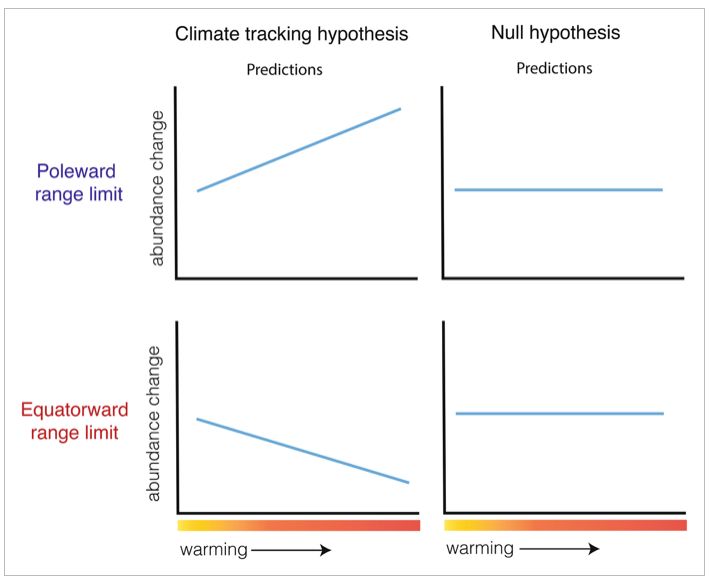

May 12, 2025 at 2:08 PM
you might think N American species are getting common at their north range limit and rare at their south range limit as temps get warmer
but you would be wrong
new paper in GEB w/ @eliotmiller.bsky.social & Matt Strimas-Mackey, eBird Status & Trends ftw
onlinelibrary.wiley.com/doi/full/10....
but you would be wrong
new paper in GEB w/ @eliotmiller.bsky.social & Matt Strimas-Mackey, eBird Status & Trends ftw
onlinelibrary.wiley.com/doi/full/10....
Reposted by Else Mikkelsen
New paper out in Ecology Letters (open access): I and Daniel Matute consider 'species sorting' -- a bias in the outcome of secondary contact following the allopatric stage of speciation -- as a reason for the much-observed pattern of elevated trait differences in sympatric close relatives
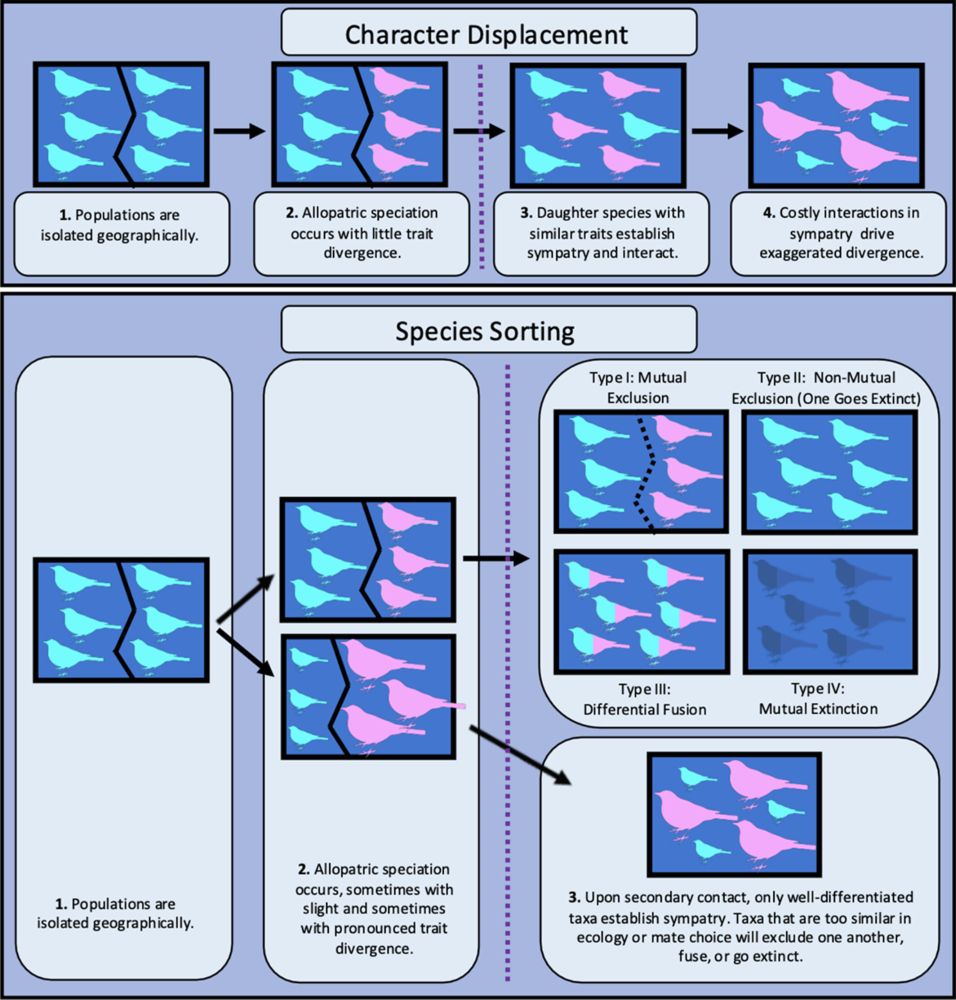
Secondary Sympatry as a Sorting Process
Early explanations for the frequent observation of exaggerated trait divergence in sympatric versus allopatric taxa focused on secondary contact between allopatrically speciating lineages and emphasi...
onlinelibrary.wiley.com
April 11, 2025 at 1:35 PM
New paper out in Ecology Letters (open access): I and Daniel Matute consider 'species sorting' -- a bias in the outcome of secondary contact following the allopatric stage of speciation -- as a reason for the much-observed pattern of elevated trait differences in sympatric close relatives
Reposted by Else Mikkelsen
OK who's ready for some science?
Do you like speciation? Genomics? Hybridization? Bioinformatics? Then this is for you:
Published today: "The Distribution & Dispersal of Large Haploblocks in a Superspecies"
Bonus interest if you like ring species and cute greenish birds:
doi.org/10.1111/mec....
Do you like speciation? Genomics? Hybridization? Bioinformatics? Then this is for you:
Published today: "The Distribution & Dispersal of Large Haploblocks in a Superspecies"
Bonus interest if you like ring species and cute greenish birds:
doi.org/10.1111/mec....

March 17, 2025 at 6:17 PM
OK who's ready for some science?
Do you like speciation? Genomics? Hybridization? Bioinformatics? Then this is for you:
Published today: "The Distribution & Dispersal of Large Haploblocks in a Superspecies"
Bonus interest if you like ring species and cute greenish birds:
doi.org/10.1111/mec....
Do you like speciation? Genomics? Hybridization? Bioinformatics? Then this is for you:
Published today: "The Distribution & Dispersal of Large Haploblocks in a Superspecies"
Bonus interest if you like ring species and cute greenish birds:
doi.org/10.1111/mec....
Reposted by Else Mikkelsen
This excellent interactive tutorial on misleading data visualizations explores the idea of a "counter chart" — the graph you draw in response to refute a misleading claims
flowingdata.com/projects/dis...
flowingdata.com/projects/dis...

Defense Against Dishonest Charts
This is a guide to protect ourselves and to preserve what is good about turning data into visual things.
flowingdata.com
February 15, 2025 at 6:48 AM
This excellent interactive tutorial on misleading data visualizations explores the idea of a "counter chart" — the graph you draw in response to refute a misleading claims
flowingdata.com/projects/dis...
flowingdata.com/projects/dis...
Reposted by Else Mikkelsen
Excited to announce our work on kelp genomics is now out at Current Biology. Lead by Postdoc extraordinaire Jordan Bemmels, we sequence WGS for 600+ bull and giant kelp across BC and Washington. authors.elsevier.com/a/1kSP93QW8S...

January 17, 2025 at 8:27 PM
Excited to announce our work on kelp genomics is now out at Current Biology. Lead by Postdoc extraordinaire Jordan Bemmels, we sequence WGS for 600+ bull and giant kelp across BC and Washington. authors.elsevier.com/a/1kSP93QW8S...
Reposted by Else Mikkelsen
OK folks this is my first announcement of a lab publication on Bluesky:
Congrats to PhD Candidate Rashika Ranasinghe on today's publication of her paper "Cryptic Hybridization Dynamics in a Three-Way Hybrid Zone of Dinopium Flamebacks on a Tropical Island."
Happy holidays!
doi.org/10.1002/ece3...
Congrats to PhD Candidate Rashika Ranasinghe on today's publication of her paper "Cryptic Hybridization Dynamics in a Three-Way Hybrid Zone of Dinopium Flamebacks on a Tropical Island."
Happy holidays!
doi.org/10.1002/ece3...

Cryptic Hybridization Dynamics in a Three‐Way Hybrid Zone of Dinopium Flamebacks on a Tropical Island
This study explores population divergence and hybridization dynamics across the golden-backed (Dinopium benghalense) and red-backed (D. psarodes) flameback woodpecker hybrid zone in Sri Lanka. The ge...
doi.org
December 23, 2024 at 3:57 PM
OK folks this is my first announcement of a lab publication on Bluesky:
Congrats to PhD Candidate Rashika Ranasinghe on today's publication of her paper "Cryptic Hybridization Dynamics in a Three-Way Hybrid Zone of Dinopium Flamebacks on a Tropical Island."
Happy holidays!
doi.org/10.1002/ece3...
Congrats to PhD Candidate Rashika Ranasinghe on today's publication of her paper "Cryptic Hybridization Dynamics in a Three-Way Hybrid Zone of Dinopium Flamebacks on a Tropical Island."
Happy holidays!
doi.org/10.1002/ece3...
Reposted by Else Mikkelsen
New preprint by butterfly wizard
@lucalivraghi.bsky.social
www.biorxiv.org/content/10.1...
We mapped optix (again?!) as the switch gene of a natural polymorphism, this time controlling silver patches of a mountain butterfly. Gorgeous RNAi validation, evidence of selective sweeps, introgression
@lucalivraghi.bsky.social
www.biorxiv.org/content/10.1...
We mapped optix (again?!) as the switch gene of a natural polymorphism, this time controlling silver patches of a mountain butterfly. Gorgeous RNAi validation, evidence of selective sweeps, introgression

December 17, 2024 at 3:18 PM
New preprint by butterfly wizard
@lucalivraghi.bsky.social
www.biorxiv.org/content/10.1...
We mapped optix (again?!) as the switch gene of a natural polymorphism, this time controlling silver patches of a mountain butterfly. Gorgeous RNAi validation, evidence of selective sweeps, introgression
@lucalivraghi.bsky.social
www.biorxiv.org/content/10.1...
We mapped optix (again?!) as the switch gene of a natural polymorphism, this time controlling silver patches of a mountain butterfly. Gorgeous RNAi validation, evidence of selective sweeps, introgression
Reposted by Else Mikkelsen
Earlier this year, I received news that fake peer reviews were allegedly being submitted impersonating me and approximately six others
I shared my story with Science to, hopefully, reduce the chance of this kind of breach happening again
www.science.org/content/arti...
I shared my story with Science to, hopefully, reduce the chance of this kind of breach happening again
www.science.org/content/arti...
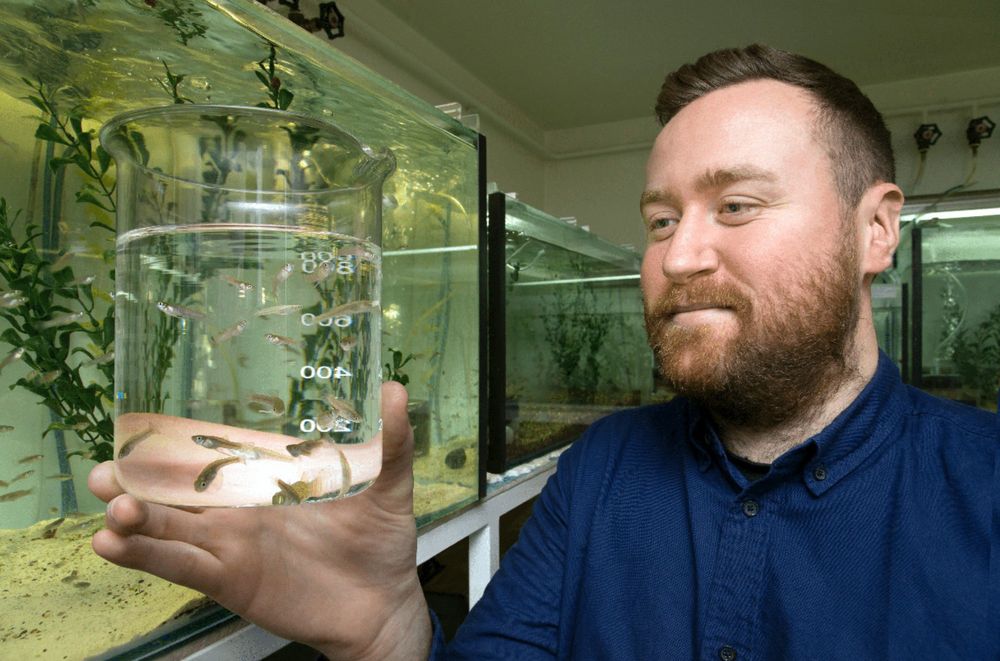
‘It felt very icky’: This scientist’s name was used to write fake peer reviews
Elsevier retracts dozens of journal articles that were published based on “fictitious” reviews
www.science.org
December 3, 2024 at 9:24 AM
Earlier this year, I received news that fake peer reviews were allegedly being submitted impersonating me and approximately six others
I shared my story with Science to, hopefully, reduce the chance of this kind of breach happening again
www.science.org/content/arti...
I shared my story with Science to, hopefully, reduce the chance of this kind of breach happening again
www.science.org/content/arti...
Reposted by Else Mikkelsen
I'm recruiting a PhD student to join my lab at the University of New Orleans starting in Fall 2025. Research topics will focus on building and using phylogenies to study the diversification of birds, with an emphasis on Neotropical bird radiations. Contact me if interested.

November 16, 2024 at 2:38 AM
I'm recruiting a PhD student to join my lab at the University of New Orleans starting in Fall 2025. Research topics will focus on building and using phylogenies to study the diversification of birds, with an emphasis on Neotropical bird radiations. Contact me if interested.
Reposted by Else Mikkelsen
New preprint up! We sequenced hundreds of samples from across one of Earth's oldest living organisms - the Pando aspen clone - to understand how mutations accumulate and spread in long-lived clonal organisms. Our results were…surprising. 1/30
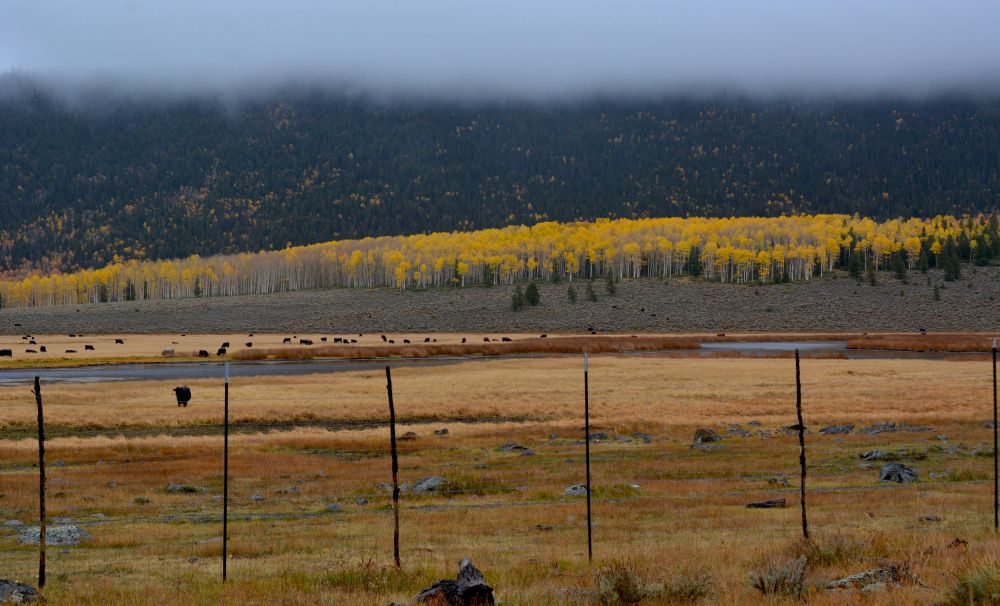
October 26, 2024 at 5:45 PM
New preprint up! We sequenced hundreds of samples from across one of Earth's oldest living organisms - the Pando aspen clone - to understand how mutations accumulate and spread in long-lived clonal organisms. Our results were…surprising. 1/30
Reposted by Else Mikkelsen
Gonna write a paper on this. PLEASE DON'T USE VCFTOOLS TO CALCULATE π. It is a random number generator, as the software assumes all bp that aren't SNPs are invariant (i.e. ignores missing data). This is especially bad in plant genomes, with abundant TEs where you can't map reads.
February 1, 2024 at 5:19 PM
Gonna write a paper on this. PLEASE DON'T USE VCFTOOLS TO CALCULATE π. It is a random number generator, as the software assumes all bp that aren't SNPs are invariant (i.e. ignores missing data). This is especially bad in plant genomes, with abundant TEs where you can't map reads.


